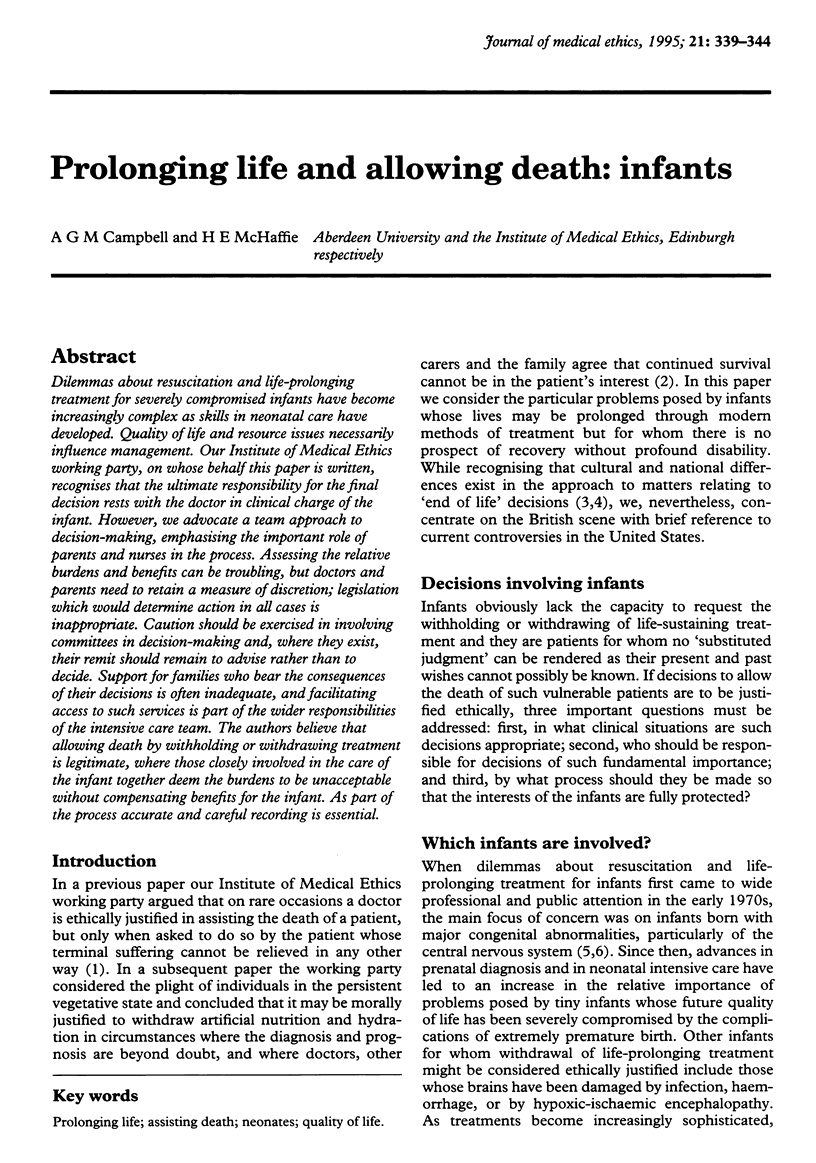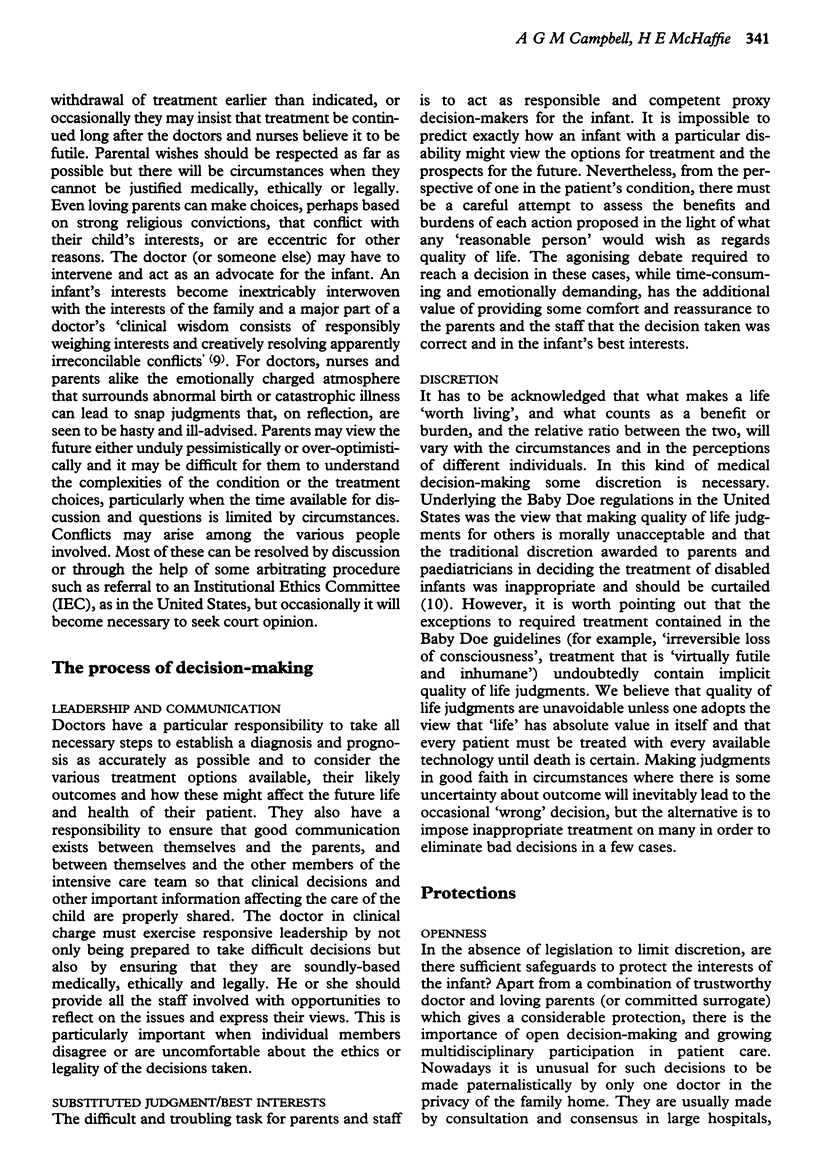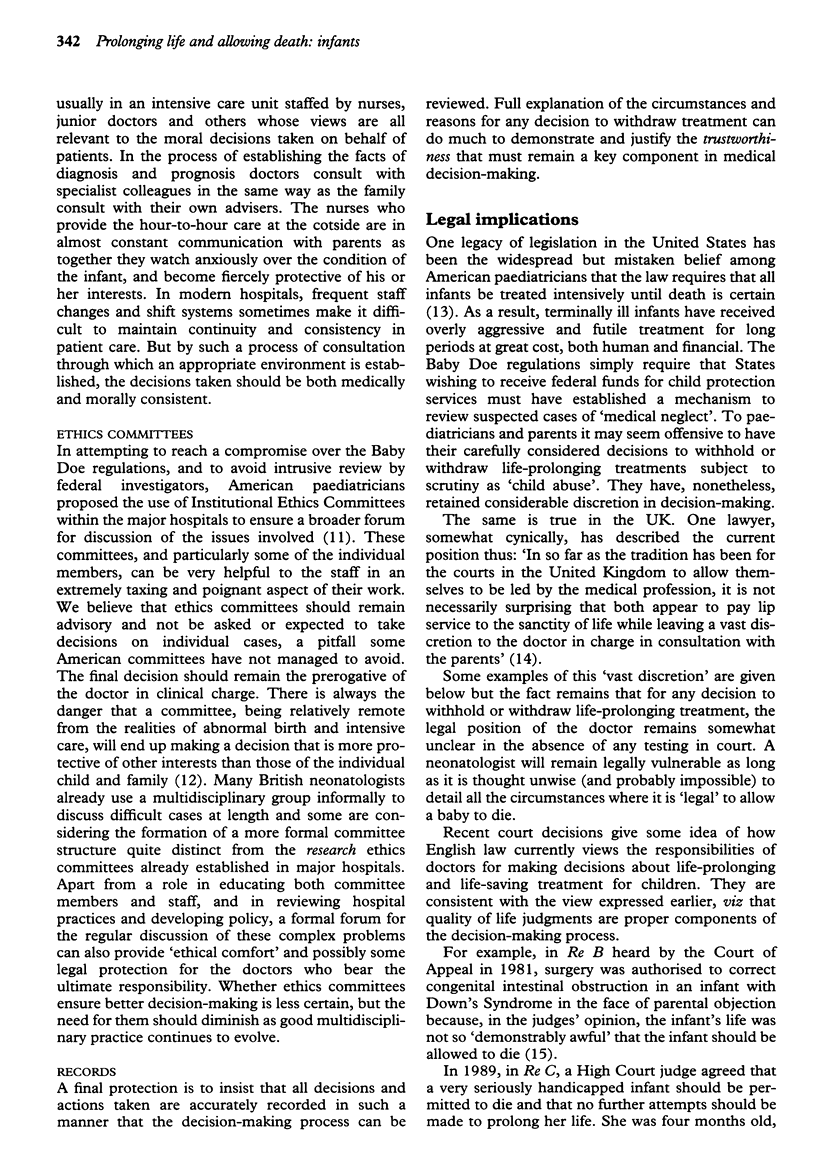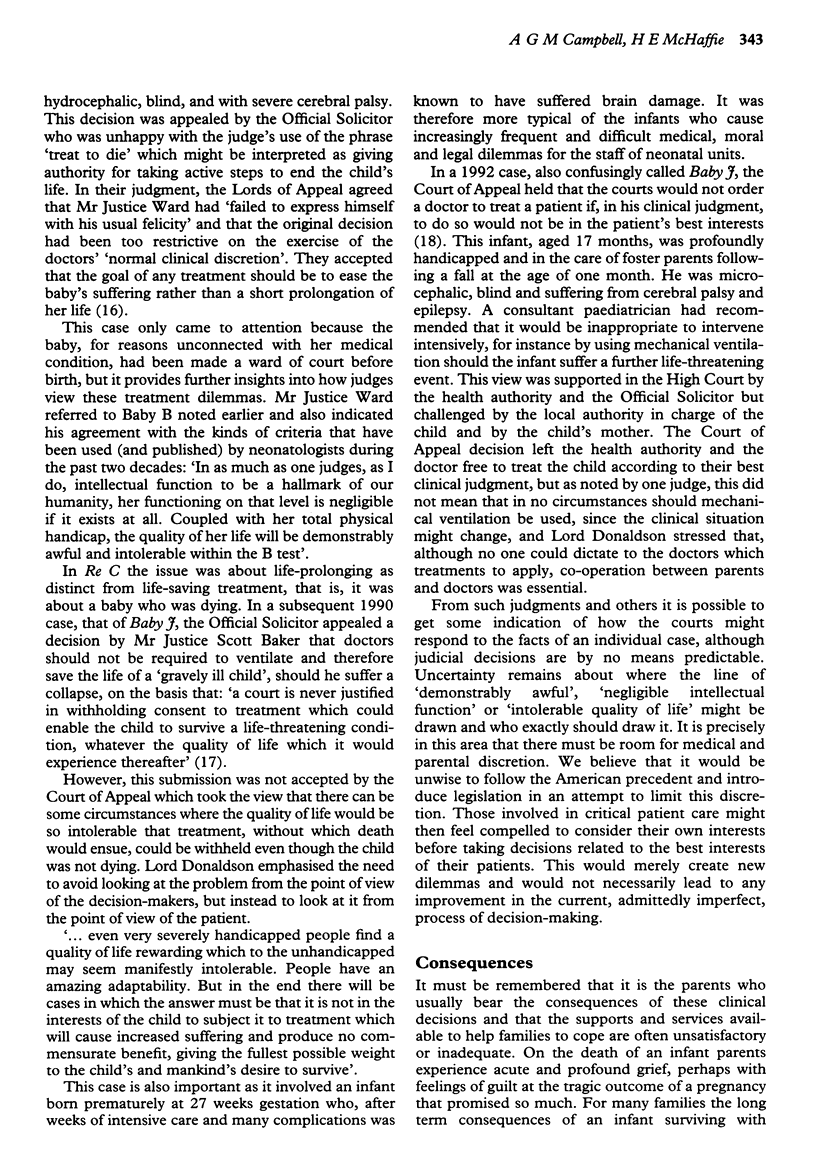Abstract
Dilemmas about resuscitation and life-prolonging treatment for severely compromised infants have become increasingly complex as skills in neonatal care have developed. Quality of life and resource issues necessarily influence management. Our Institute of Medical Ethics working party, on whose behalf this paper is written, recognises that the ultimate responsibility for the final decision rests with the doctor in clinical charge of the infant. However, we advocate a team approach to decision-making, emphasising the important role of parents and nurses in the process. Assessing the relative burdens and benefits can be troubling, but doctors and parents need to retain a measure of discretion; legislation which would determine action in all cases is inappropriate. Caution should be exercised in involving committees in decision-making and, where they exist, their remit should remain to advise rather than to decide. Support for families who bear the consequences of their decisions is often inadequate, and facilitating access to such services is part of the wider responsibilities of the intensive care team. The authors believe that allowing death by withholding or withdrawing treatment is legitimate, where those closely involved in the care of the infant together deem the burdens to be unacceptable without compensating benefits for the infant. As part of the process accurate and careful recording is essential.
Full text
PDF





Selected References
These references are in PubMed. This may not be the complete list of references from this article.
- Coulter D. L. Neurologic uncertainty in newborn intensive care. N Engl J Med. 1987 Apr 2;316(14):840–844. doi: 10.1056/NEJM198704023161404. [DOI] [PubMed] [Google Scholar]
- Duff R. S., Campbell A. G. Moral and ethical dilemmas in the special-care nursery. N Engl J Med. 1973 Oct 25;289(17):890–894. doi: 10.1056/NEJM197310252891705. [DOI] [PubMed] [Google Scholar]
- Jayes R. L., Zimmerman J. E., Wagner D. P., Draper E. A., Knaus W. A. Do-not-resuscitate orders in intensive care units. Current practices and recent changes. JAMA. 1993 Nov 10;270(18):2213–2217. [PubMed] [Google Scholar]
- Kopelman L. M., Irons T. G., Kopelman A. E. Neonatologists judge the "Baby Doe" regulations. N Engl J Med. 1988 Mar 17;318(11):677–683. doi: 10.1056/NEJM198803173181105. [DOI] [PubMed] [Google Scholar]
- Lorber J. Results of treatment of myelomeningocele. An analysis of 524 unselected cases, with special reference to possible selection for treatment. Dev Med Child Neurol. 1971 Jun;13(3):279–303. [PubMed] [Google Scholar]
- Rhoden N. K. Treating Baby Doe: the ethics of uncertainty. Hastings Cent Rep. 1986 Aug;16(4):34–42. [PubMed] [Google Scholar]
- Ryan C. A., Byrne P., Kuhn S., Tyebkhan J. No resuscitation and withdrawal of therapy in a neonatal and a pediatric intensive care unit in Canada. J Pediatr. 1993 Oct;123(4):534–538. doi: 10.1016/s0022-3476(05)80946-1. [DOI] [PubMed] [Google Scholar]
- Weir R. F. The government and selective nontreatment of handicapped infants. N Engl J Med. 1983 Sep 15;309(11):661–663. doi: 10.1056/NEJM198309153091110. [DOI] [PubMed] [Google Scholar]


